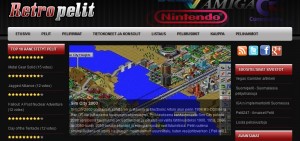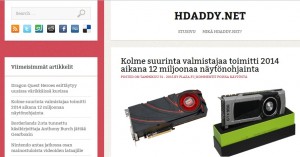TOBU Charge Review
In January 2015, TOBU Discs launched a Kickstarter campaign to help fund the development and production of the first PDGA approved discs with electronic components. The Charge (initially called the Ping) has a Bluetooth tracking device that connects to a mobile app allowing you to find your disc with a little assistance from technology. After hitting their fundraising goal, the Charge went into production and is now available for anyone to try.
We were a backer of the project (as we are with any disc golf themed Kickstarter campaign) and got our hands on the Charge as a beta tester. In most reviews we cover only the flight of the disc, but for this review we want to also add details on the tracking of the disc and the companion app.
Flight Characteristics
The TOBU Charge is a fairway driver with a neutral-to-understable flight. The plastic is a Champion-like blend that kind of reminds us of Prodigy’s 400 series plastic. It is on the gummy side of the spectrum too.
The Charge’s rim isn’t overly wide (1.7 cm) and really easy to grip. The flat top leads to a very low profile with virtually no dome. It almost requires a flat top since the tracking device screws onto the center of the bottom of the flight plate. It needs to be as flush as possible since you are placing electronics below this and once it gets wet, say bye-bye to it working. The bottom of the wing is pretty concave which really never comes in contact with your hand.
The inside of the rim actually has three different textured sections: smooth (like a typical discs), lightly textured, and roughly textured. The idea is to provide more grip as you move up the ranks with the rough part being useful when the disc is wet. We did most of our tests with the disc dry just due to the weather being that way. On one morning round with the dew still fresh on the course, the bottom of the disc was a little wet and we found taking the time to wipe the bottom of the disc better than using the rough textured area. Our testers mainly preferred the smooth section when they threw the Charge. A few didn’t mind the textured areas, but it wasn’t a standout feature either.

The electronic chip inside the housing on the bottom of the Charge.
Our disc weighed in at about 165g, which is lower than we’d typically throw. We tend to throw the max weight (175g) for drivers and most of our testing group also leaned on the heavier side of things. The tracker itself and the housing for it weighs in at 9.3g. On other discs, the majority of the weight remains in the wing in one flavor or another. This one has some of the overall weight directly centered on the disc. It is hard to tell how much of a difference in flight this makes and we can’t really judge that unless we threw a Charge of equal weight without the tracker in the center. If we were to remove it, we’re also removing nearly 10g of weight and the difference between a 175g and 165g discs is noticeable.
The Charge is a very easy to throw fairway driver and had a pretty straight flight. There was a little more turn than we initially were expecting too. The lighter weight might have had something to do with it, but we consistently saw a steady turn on every throw. It could flip up from hyzer with ease and show a steady left to right flight on full power throws. We had some shots where we took a little power off of it and the turn would still show up. Power throwers will likely see a more understable flight than an average arm.
Just as there was a decent turn, the Charge would always fade out for us too. The majority of our throws would come back to center, but it wouldn’t fly too far to the left of our initial line. We could always trust it to break out of the turn, but we never saw any big flare or skip finishes. It is a predictable finish that you can really control.
In terms of speed and glide, it was pretty typical for this fairway driver class. TOBU gives the Charge ratings of 9 and 4 for speed and glide respectively, but we’d bump those to a 7-8 for speed and would keep the glide rating the same. It will stay aloft, but when compared to other Speed 9 discs, the Charge was a step behind. In our minds, there is a pretty noticeable jump from Speed 7 to 9 and the Charge is on the lower end of that range.
Overall, we’d rate the TOBU Charge at 7-8, 4, -1.5, 2. You’ll get a decent turn on nearly every throw that can easily be a hyzer flip. The turn is followed by a small fade, but nothing too strong.
Time and time again during our tests we saw very straight flights out of the Charge. We didn’t see anything that dramatic, but we didn’t expect to in a disc like the Charge. You’ll have plenty of control on your drives and once you master the rate of turn and fade, you should be able to place the Charge with confidence.
Tracking the Charge

The housing that holds the electronics for the Charge.
The electronic chip that tracks the Charge is connected on the bottom of the flight plate inside a housing that is threaded shut. It takes a delicate touch to screw on and off the housing, but when you get the feel for it, it is pretty easy to do. Be careful not to cross thread anything and if you try and force it, you could do more harm than good. The only times you’d need to unscrew would be when you need to change a battery or install a new tracking device if yours fails.
To use the tracking feature on the Charge, you need to connect it to the TOBU app which is available for iOS and Android. Bluetooth is required and needs to be turned on when setting it up and when actively using it. Connecting the disc to the app was relatively easy and only took a few moments to do. You can connect multiple discs if others in your group are also using the Charge.
We grabbed the Charge on a teeshot and purposefully didn’t follow where it landed. We really wanted to test the ability of the technology to help us find the disc. We fired up the tracking feature and started to walk. We had a general idea where it landed, but it wasn’t until we were about 40-50 feet away when we first saw it pop up as in range and detectable. At that point, we could see it from where we were standing and really didn’t need the help of the app. Once it gets in range, you can choose to have it start to ring which will produce a steady beeping sound until you turn it off.


When you first get it in range, it just shows that it is within a certain range and not the exact location for where it is at. We’d love to have it track almost like a GPS would, but it more gives you a general idea of where it is and then it leans on you for the audio and visual cues.
The Bluetooth technology also hinders the range a little bit. We would love to see it found on the app when we’re about 150 feet or so away and we could activate the beeping then to help us track it quicker. The beeping was pretty clear, yet it was on a quiet day at the course. In a tournament or on a more active day at the course, we could see it being a little harder to hear, but the tone and pitch is pretty noticeable.
Can the Charge be tracked with the app? Yes, but it does rely on the user to do most of the leg work. The beeping is certainly helpful, but you have to be closer than we’d like to even get that started.
TOBU Discs App
The TOBU Discs App, free for iOS and Android, can do more than just track your disc. It is designed to be a full on scorecard app. You can create users, register discs, and start a round pretty quickly. It shouldn’t take long to figure out the interface, especially if you’ve used other scorecard apps.
The app itself actually remind us a lot of the popular UDisc app. The interface is similar with the menu living off to the side with a slew of features including the popular shot measurement feature. There is a wealth of stats that are computed as you continue to play rounds and input more data too.
One feature that is lacking in the TOBU app is the course directory. When you fire it up and find courses near you, odds are you won’t find many available. There weren’t any near us and we pulled the map all the way out to show the entire country and it was pretty easy to scroll through all of them that were out there. UDisc on the other hand will have just about every course that is currently open for play. There is an option to manually input the courses in the TOBU app and hopefully over time more and more users will help develop this database.
We were curious to see if we could import our data from UDisc to TOBU and that isn’t possible either. We had to start fresh in TOBU which did made our putting scores look better… hey, we’ll take a win whenever we can!
While it is a solid scorecard app on the surface, there aren’t too many groundbreaking features outside of the disc tracking which is unique to the TOBU app alone. It is a clean interface that is quick to learn and can easily help you keep track of your scores on the course.
The Whole Package
You can pick up a TOBU Charge from their online store for $35.95. The price is about double of a Champion plastic fairway driver from other companies, but TOBU argues that since you are able to track your disc, you can find it easier and save you money in the long run. Replacing a driver over and over can get costly and by paying up front, you’re placing bets that you can find the Charge if you were to lose it and you then saved yourself $15-18 the next time at the store.
If the tracking tag fails on you, new ones are available for $15.95 with a new housing cover running you $5.
The nearly $40 investment can seem a little expensive for a disc golf disc when many are used to paying $15 or less for a single disc. Plus, if you throw this into the water and you are lucky enough to get it back, odds are you’ll need a new tracking device too and that is now another $16 on top of what you’ve already spent.
Many will also find themselves wondering if this can knock a disc out of your bag and become a new staple for you. It could easily happen for many, but it can get a little expensive too. It all depends on what type of disc you are looking for to help lower scores on the course.
The disc is a very straight flying fairway driver and the ability to track the disc with an app is nice. The price tag might turn some people off, but it could easily save some people money in the long run too. TOBU has built a solid product which should help challenge all the disc golf companies when it comes to technology and disc golf.
The TOBU Charge is a great step in a new direction for disc golf. It was only a matter of time when electronic components would be introduced into a disc and technology would show up in the sport. Someone needed to take the first leap into this unknown world and TOBU has been brave enough to take the plunge. Is technology and disc golf a match made in heaven and is here to stay or is it just a concept that will run its course and fizzle out? We can’t answer that with confidence today, but as far as TOBU is concerned, this is the future.
The post TOBU Charge Review appeared first on All Things Disc Golf.



